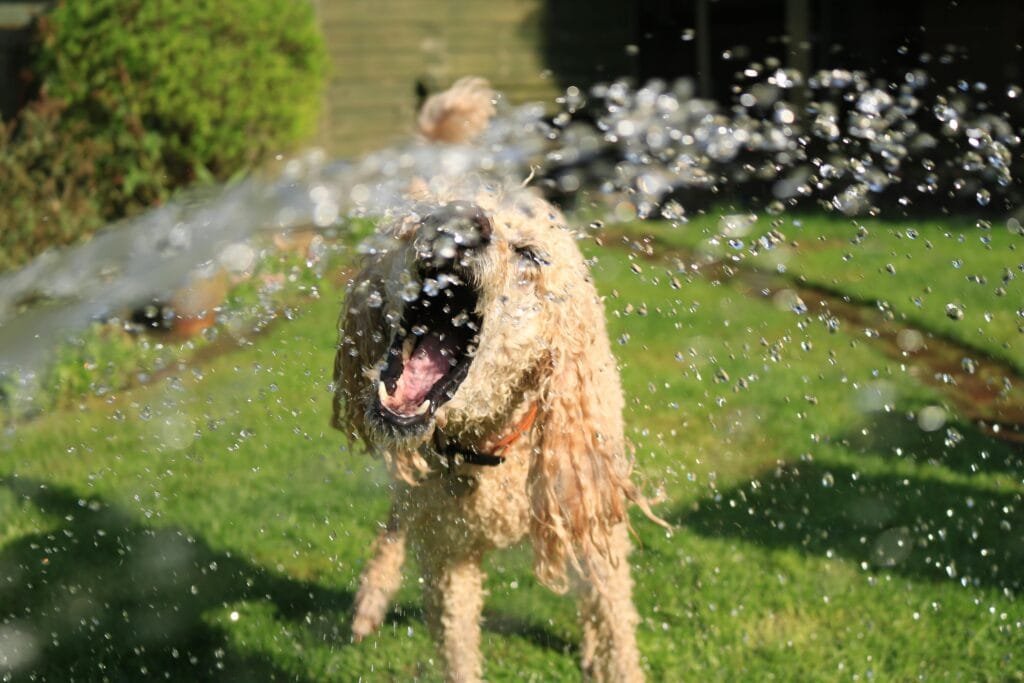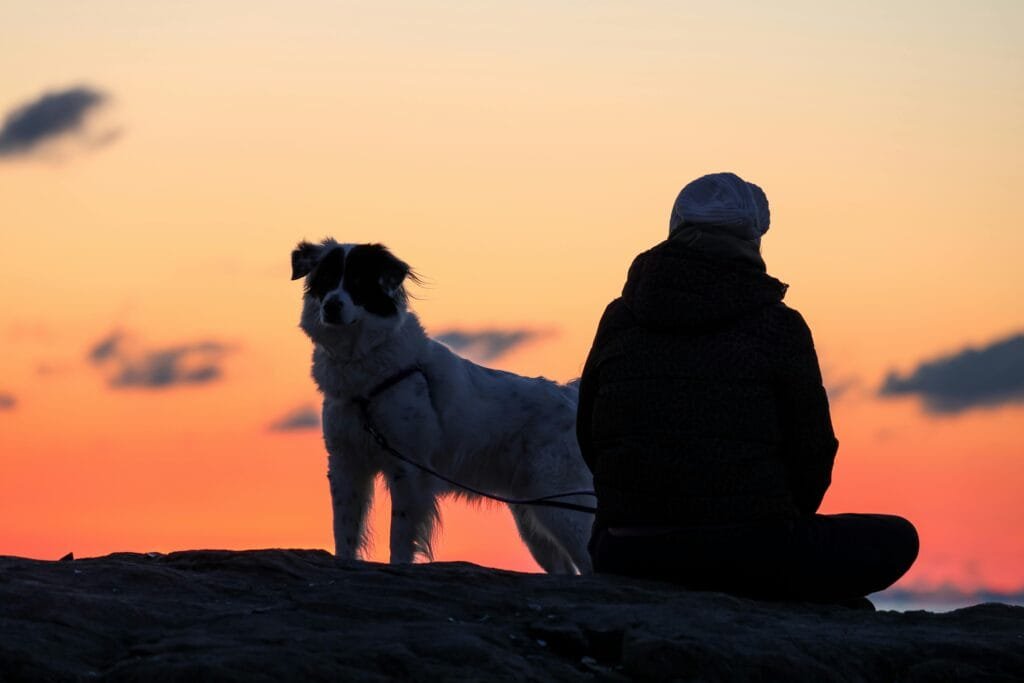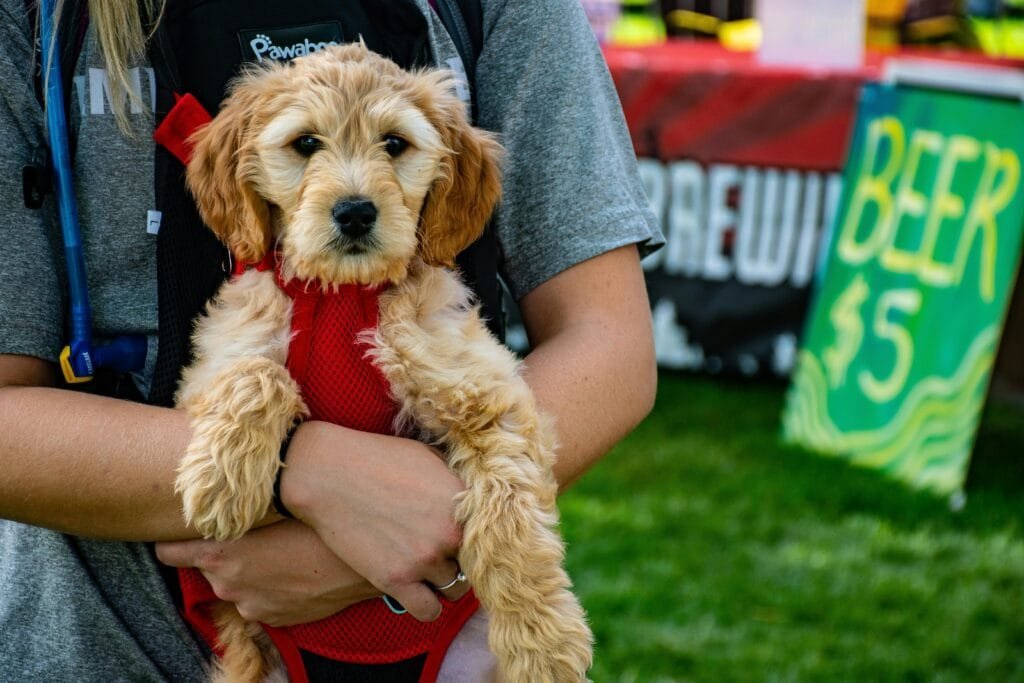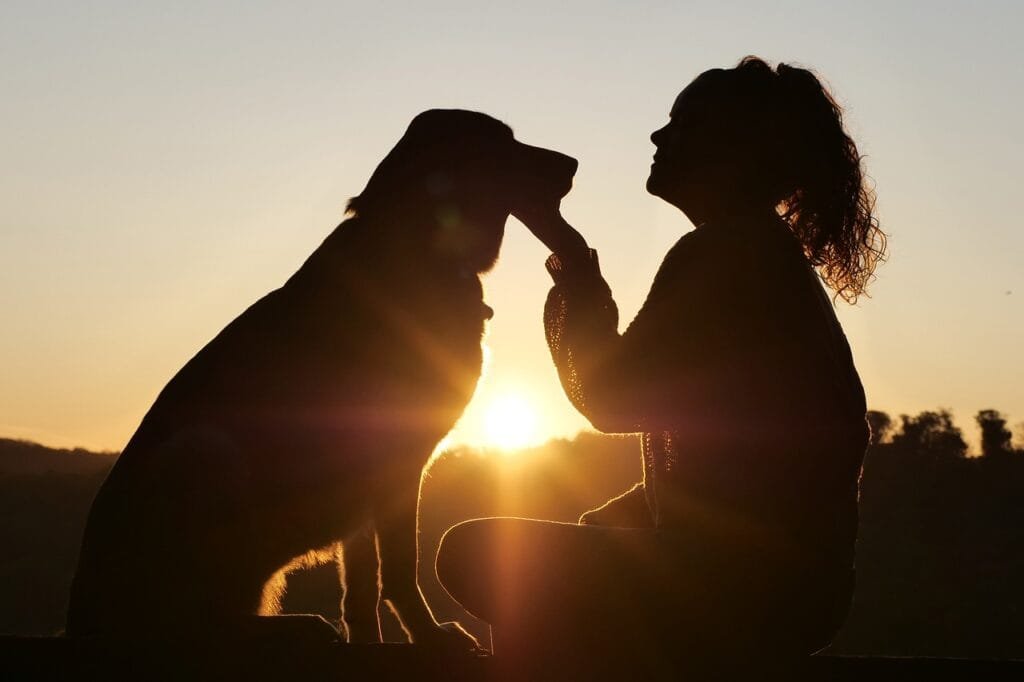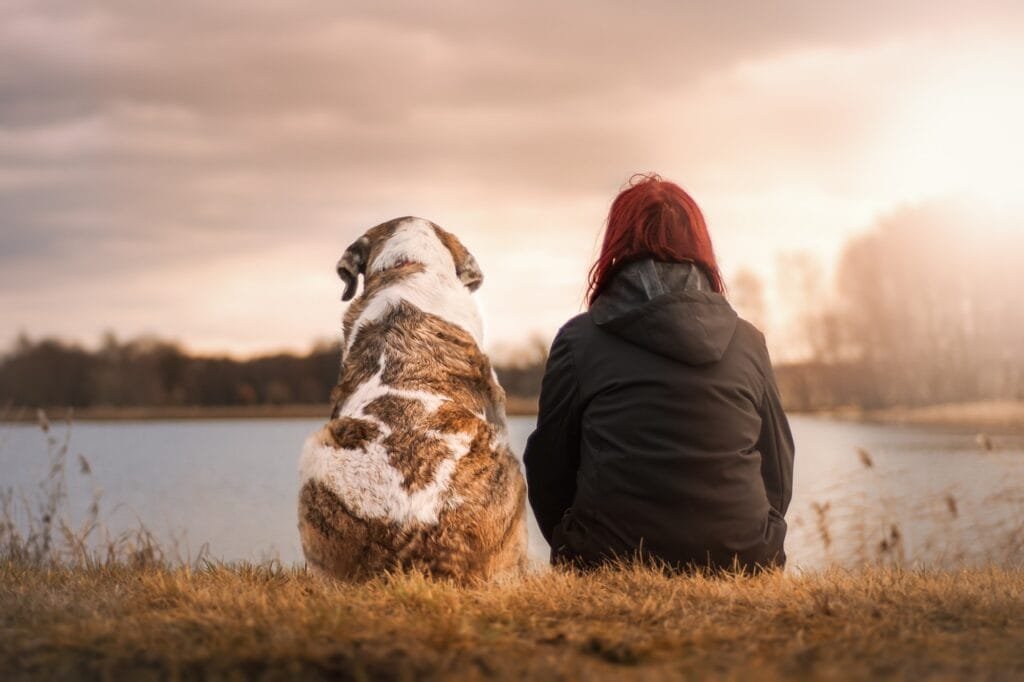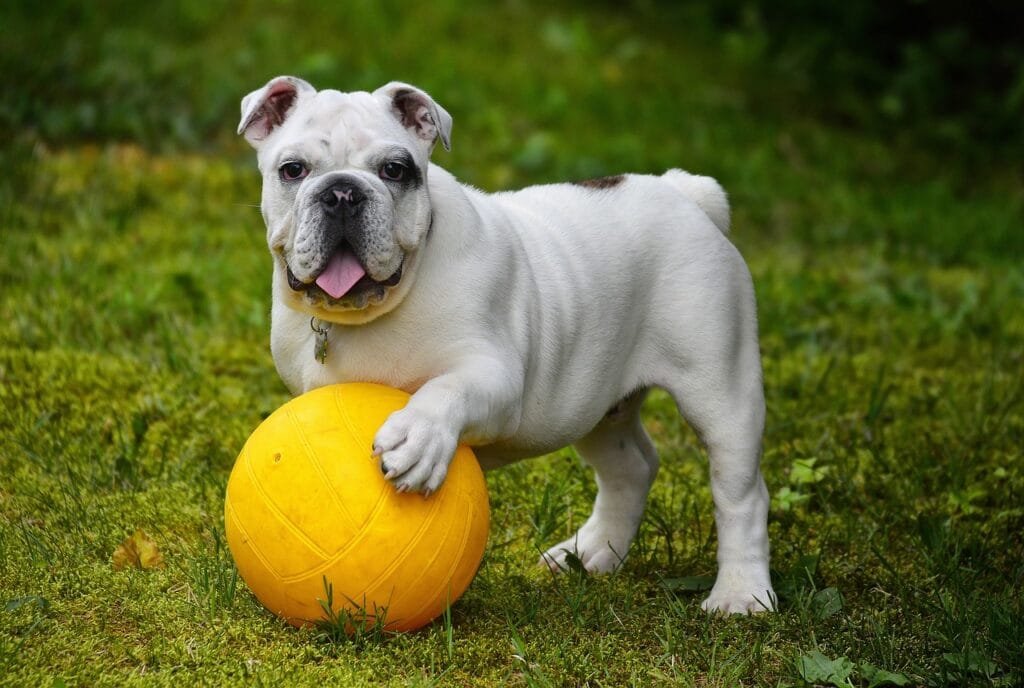Dog training in hot weather: Stay safe, cool, and focused
Sunny days, longer walks, more time outside. Summer sounds ideal for training, right? But for dogs, heat can turn a fun session into a stressful or even dangerous one. Dog training in hot weather takes more than enthusiasm. It takes awareness, planning, and a deep respect for your dog’s physical comfort.
When your dog’s too hot to think clearly, training becomes frustrating instead of productive. With a few small changes, you can make sure your summer sessions are safe, enjoyable, and still help your dog thrive.
Quick takeaways
- Hot weather affects dogs’ ability to focus and regulate emotions
- Some breeds and health conditions make dogs more heat-sensitive
- Overheating increases the risk of shutdown, reactivity, or injury
- Cool surfaces, shaded spots, and water breaks make a big difference
- Frozen treats, early sessions, and shorter blocks help dogs stay engaged
Why dog training in hot weather is harder
Dogs don’t cool themselves like we do. They rely mostly on panting and limited sweat glands in their paws, which makes them much more prone to overheating. When their body gets too warm, their brain struggles to stay focused — and training becomes much harder.
You might notice:
- Lower motivation and engagement
Your dog may seem distracted or slow to respond, even if they know the cue well - Decreased interest in food or toys
Treats that normally work may be refused because your dog is too warm to care - More frustration and reactivity
Overheating can make dogs more irritable or impulsive, which increases the chance of emotional outbursts - Fatigue and shut-down
Your dog may seem tired or uncooperative, when in fact they are just too warm to function comfortably
Think of heat as a competing factor in training. Your dog’s body is working hard to stay cool, so there’s less bandwidth left for learning.
Signs your dog is overheating
Heatstroke can sneak up quickly, especially in active dogs or breeds with thick coats or short muzzles. Even light activity in full sun can push a dog into the danger zone if they don’t have access to shade or water.
Early signs of heat stress include:
- Fast, heavy panting
- Bright red or pale gums
- Glassy or unfocused eyes
- Weakness or reluctance to move
- Vomiting or diarrhea
- Restlessness, disorientation, or confusion
If you spot these signs, move your dog into shade immediately. Offer cool (not cold) water and gently wet their paws, belly, and armpits. Skip wet towels as they can trap heat. And when in doubt, call your vet. Heatstroke is a medical emergency.
For a detailed guide on cooling your dog safely, visit Dr. Buzby’s canine cooling tips.
Dogs most at risk in hot weather
Not all dogs are equally equipped for dog training in hot weather, especially when health conditions or breed traits limit their ability to cool down. Some are more prone to overheating than others:
- Flat-faced breeds like Bulldogs, Boxers, and Pugs
- Senior dogs, who may struggle to regulate their body temperature
- Overweight dogs, who retain heat more easily
- Dogs with respiratory conditions like collapsing trachea or chronic cough
If your dog falls into any of these categories, take extra precautions when doing dog training in hot weather or stick to indoor options entirely on hotter days.
Protecting paws and choosing safe surfaces
Even if the air feels okay, the ground can be scorching. Asphalt, artificial turf, and concrete can burn paws in minutes. Here’s how to keep your dog safe:
- Use the seven-second rule: If you can’t hold the back of your hand on the pavement for 7 seconds, it’s too hot for your dog
- Favour grass, dirt trails, shaded sidewalks, or covered patios
- Consider dog booties made for summer or a breathable paw wax to act as a barrier
Cooling mats or shaded blankets also help during breaks or stationary training.
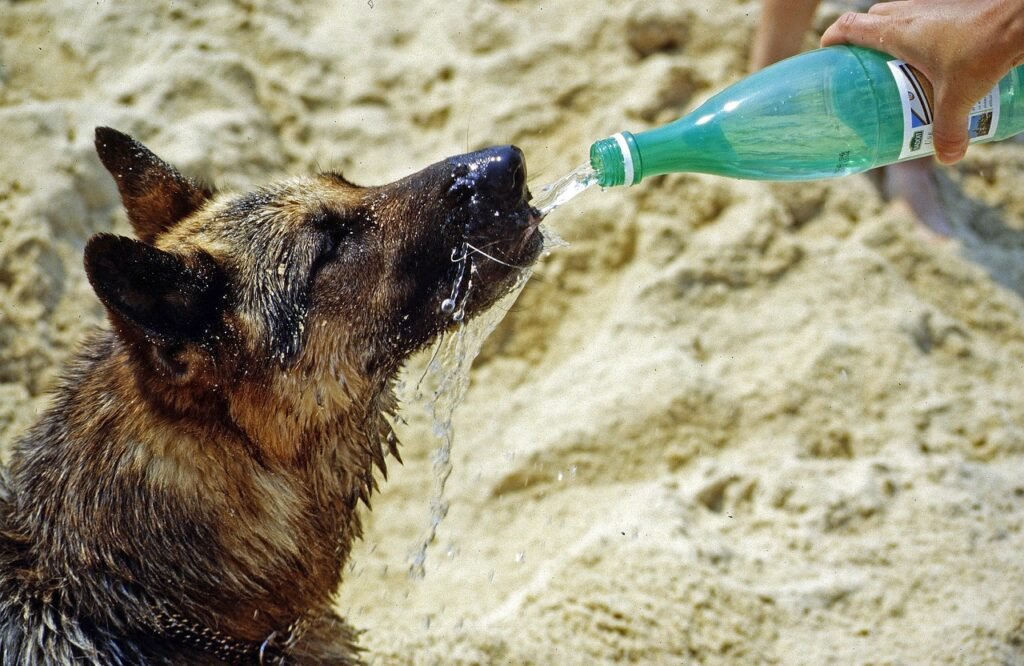
What to bring for summer training sessions
A bit of prep goes a long way when you’re training outdoors. Pack these essentials to keep your dog cool, hydrated, and focused:
- Plenty of water
- A collapsible bowl or squeeze bottle
- Portable shade like a small umbrella or pop-up tent
- Cooling mat or wrapped ice pack
- Frozen treats or cooled rewards (store in a cooler bag)
- Regular leash, poop bags, and ID tag
These tools make spontaneous water breaks or shaded check-ins easy during summer outings.
Adjusting your training for summer success
Dog training in hot weather doesn’t have to be a write-off. It just needs smart adjustments. Keep sessions short, fun, and heat-aware:
- Train during cooler hours
Early mornings and late evenings offer more comfort and better attention spans - Keep sessions short and focused
Aim for five-minute blocks with breaks in between - Incorporate water and movement breaks
Play in the hose, splash pool, or shady area between sessions - Use frozen or chilled rewards
Frozen KONGs, broth cubes, or cooled meat treats keep dogs motivated - Move training indoors when needed
Mental stimulation via puzzles, shaping games or calm cues counts, even if you stay inside
And most importantly? If your dog seems hot, tired, or off their game, it’s okay to stop. Their wellbeing matters more than ticking off a training goal.
Key takeaways
- Dog training in hot weather requires thoughtful pacing and planning
- Heat affects your dog’s motivation, focus, and emotional regulation
- Watch for early signs of overheating, especially in high-risk breeds
- Protect paws from hot surfaces and bring water, shade, and frozen treats
- Adjust session timing, duration, and intensity to match the temperature
- Mental training indoors can be just as valuable as physical practice
Want a summer-friendly training plan?
We can help you adapt your routine for the season, whether you’re working with a high-energy adolescent or a heat-sensitive senior. Let’s make sure your dog stays safe, engaged, and thriving through the warmer months.
📅 Book a private training session or join our newsletter for monthly tips on behaviour, enrichment, and seasonal training strategies.

